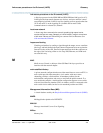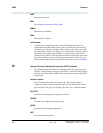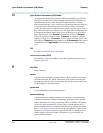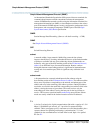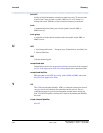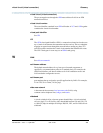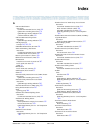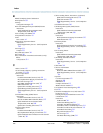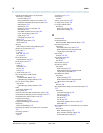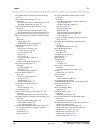
T-carrier
487
Administration for Network Connectivity
555-233-504 — Issue 1 — April 2000 CID: 77730
Glossary
T-carrier
A hierarchy of digital voice- and data-transmission systems used in North
America and based on multiples of the capacity of the T-1 line.
tandem switch
A switch within an electronic tandem network (ETN) that provides the logic to
determine the best route for a network call, possibly modifies the digits
outpulsed, and allows or denies certain calls to certain users.
tandem-through
The switched connection of an incoming trunk to an outgoing trunk without
human intervention.
tandem tie-trunk network (TTTN)
A private network that interconnects several customer switching systems.
TCP
Transmission Control Protocol — Transport layer; Connection oriented,
reliable.
TCP/IP
Transmission Control Protocol/Internet Protocol. A standard that lets different
computer hardware and different operating systems (such as PCs, Apple
computers, UNIX workstations, and mainframes) communicate with each other
over a network. TCP/IP is the most complete, most widely accepted network
protocol currently available.
TDM
See time-division multiplexing.
tie trunk
A telecommunications channel that directly connects two private switching
systems.
time-division multiplexing
A way of interleaving digitized voice, video, and/or data so that several calls
can be sent concurrently over the same spread of frequencies. TDM systems
distribute the available bandwidth across a series of time slots and divide each
input stream into a set of samples. They then assign successive time slots to the
first sample in each input stream. They repeat the process until all time slots
have been assigned or all inputs sent. At the far end, the receiver demultiplexes
the transmission and reconstructs the original sequence of samples.
Time-division multiplexing is typically used on circuit-switched networks.



